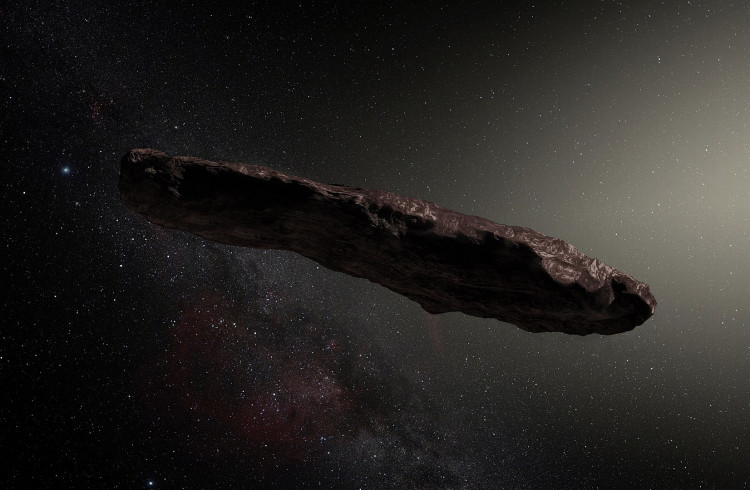'Oumuamua, the first known interstellar object to visit our solar system, remains a mind-boggling object even after four years of its discovery.
First thought to be composed of molecular hydrogen ice, scientists at the Harvard & Smithsonian (CfA), Center for Astrophysics, and the Korea Astronomy and Space Science Institute (KASI) now have a reason to believe that this might be not the case.
A previous study conducted by Dr. Darryl Seligman from the University of Chicago and Professor Gregory Laughlin from Yale University suggested that 'Oumuamua was a massive lump of hydrogen ice. However, the research team of this new study cast doubts, as it's impossible for hydrogen icebergs to survive a journey from another solar system because they easily evaporate.
"The proposal by Seligman and Laughlin appeared promising because it might explain the extremely elongated shape of 'Oumuamua as well as the non-gravitational acceleration," Dr. Thiem Hoang, a senior researcher at KASI said. "However, in regions with high gas density, collisional heating by gas collisions can rapidly sublimate the hydrogen mantle on the grains, preventing them from growing further."
Scientists were puzzled in 2017 when they found an odd object in our solar system.
A combination of the sheer speed of this object and the absurd nature showed it was not ours. Rather, this body was perhaps a visitor from some remote, unknown solar system.
Eventually, astronomers called it 'Oumuamua, which is a Hawaiian term that loosely translates into "the scout." By the time we found the alien, it was already returning to the interstellar dimensions from where it originated. According to scientists, the weird object was ejected from its home system for reasons still unknown.
Cosmologists have speculated that anything like 'Oumuamua may come from a still-forming system, and a swarm of planetary systems may just have the right gravitational influence to scatter bits of debris around the cosmos.
Everything about 'Oumuamua screams alien and nothing of our solar system. Leaving aside the characteristics of its orbit, which tie it firmly down as it really is the interstellar interloper, the object looks like a random rock that sprung out of nowhere.
At just a few hundred feet in length but quite thin, 'Oumuamua resembles a giant floating cigar in space. The body has a dark red hue to it, reminiscent of objects found in our own solar system's distant borders, such as Pluto.
The nature of the interstellar traveler is perhaps one of the biggest mysteries in our solar space, but scientists believe it won't remain so for much longer, especially if it's not solitary.





